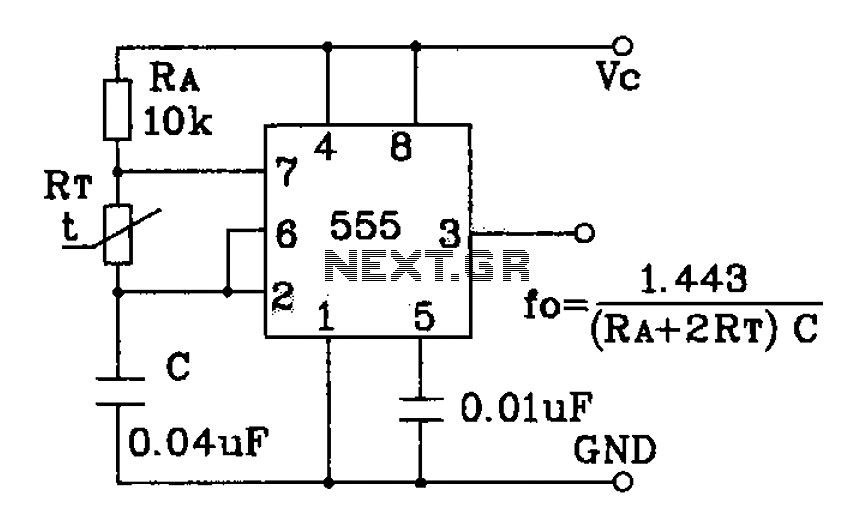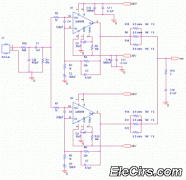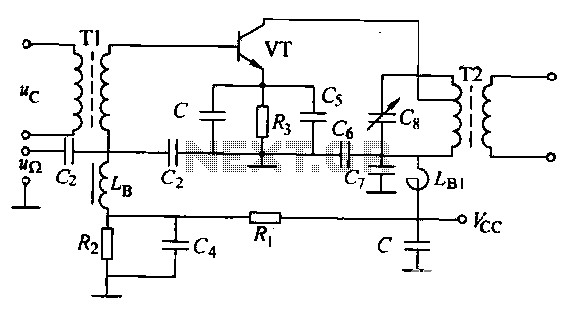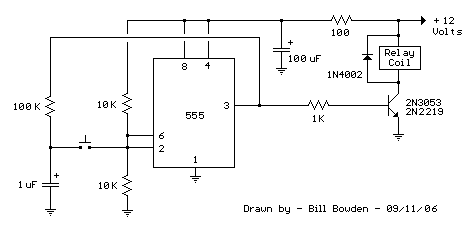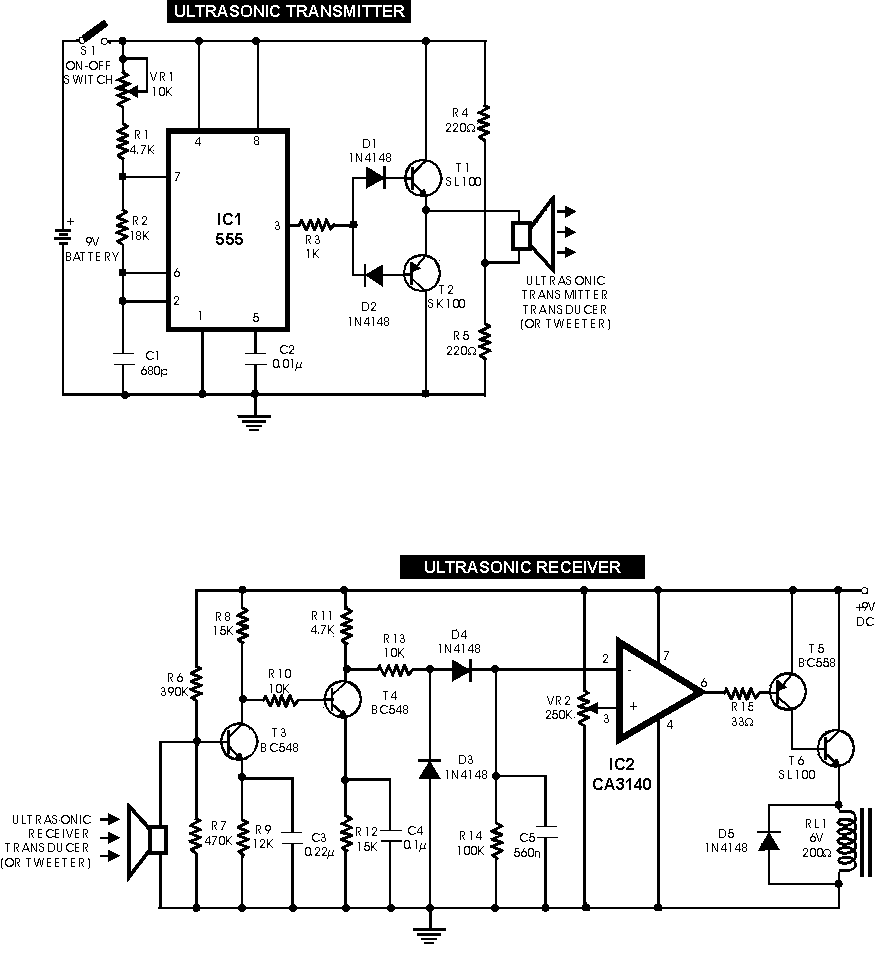
LM4911 different power circuit conduction time recommended
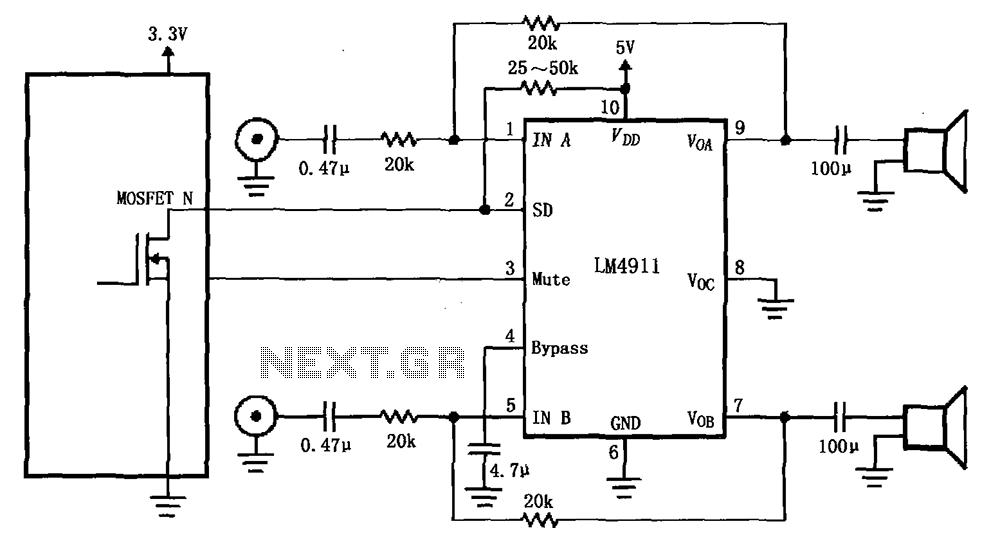
The circuit for the LM4911 demonstrates different power conduction times. It utilizes a controller, specifically the MOSFET LM4911 shutdown control (SD) terminal, to regulate the on-time of the amplifier.
The LM4911 is a power amplifier designed for audio applications, providing high efficiency and low distortion. The circuit configuration allows for various power conduction times, which can be critical in applications requiring precise control over amplifier performance to optimize power consumption and thermal management.
In this circuit, the MOSFET serves as a switch that is controlled by the shutdown (SD) terminal of the LM4911. When the SD terminal is activated, it turns on the MOSFET, allowing current to flow through the amplifier. The duration for which the MOSFET remains on is regulated by the controller, ensuring that the amplifier operates within its specified parameters for optimal performance.
The on-time regulation is essential for applications where battery life is a concern, as it prevents the amplifier from drawing excessive current when not in use. This feature is particularly useful in portable audio devices, where power efficiency directly impacts battery longevity.
Additionally, the design may incorporate feedback mechanisms to monitor the output and adjust the on-time accordingly, further enhancing the amplifier's efficiency and performance. Proper layout and component selection are also critical in minimizing noise and ensuring stable operation across varying conditions.
Overall, the implementation of the LM4911 with a controlled MOSFET shutdown feature presents a robust solution for managing power in audio amplification applications. As shown for the LM4911 different power conduction time recommended circuit. This circuit uses a controller, use the controller of the MOSFET LM4911 shutdown control (SD) termi nal is controlled to achieve on-time regulation of the amplifier.
The LM4911 is a power amplifier designed for audio applications, providing high efficiency and low distortion. The circuit configuration allows for various power conduction times, which can be critical in applications requiring precise control over amplifier performance to optimize power consumption and thermal management.
In this circuit, the MOSFET serves as a switch that is controlled by the shutdown (SD) terminal of the LM4911. When the SD terminal is activated, it turns on the MOSFET, allowing current to flow through the amplifier. The duration for which the MOSFET remains on is regulated by the controller, ensuring that the amplifier operates within its specified parameters for optimal performance.
The on-time regulation is essential for applications where battery life is a concern, as it prevents the amplifier from drawing excessive current when not in use. This feature is particularly useful in portable audio devices, where power efficiency directly impacts battery longevity.
Additionally, the design may incorporate feedback mechanisms to monitor the output and adjust the on-time accordingly, further enhancing the amplifier's efficiency and performance. Proper layout and component selection are also critical in minimizing noise and ensuring stable operation across varying conditions.
Overall, the implementation of the LM4911 with a controlled MOSFET shutdown feature presents a robust solution for managing power in audio amplification applications. As shown for the LM4911 different power conduction time recommended circuit. This circuit uses a controller, use the controller of the MOSFET LM4911 shutdown control (SD) termi nal is controlled to achieve on-time regulation of the amplifier.
